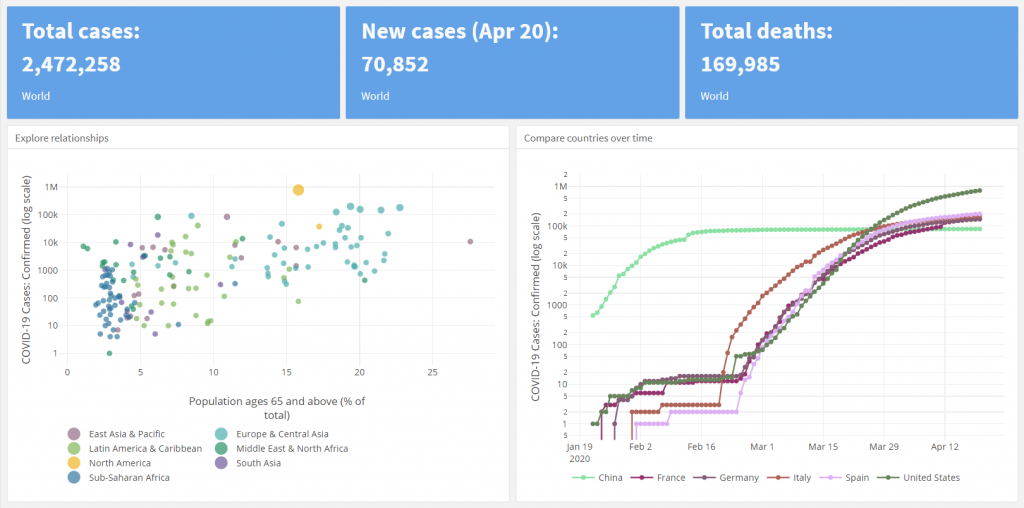
The coronavirus pandemic is creating immense human, social and economic costs for every country worldwide. The World Bank Group and other international organizations are responding with rapid and broad-based strategies. With the situation changing by the hour, one of the most daunting challenges is keeping up with both the incredible supply and increasing demands for information and data.
Fortunately, hundreds of organizations and teams—both official and self-organized—are stepping into the breach to provide real-time data that start to address the gaps. Just a few of our early favorites include, Johns Hopkins University, which is curating global datasets on confirmed cases and deaths, Our World in Data, which has been crowd-sourcing data on testing, and the United Nations Office for the Coordination of Humanitarian Affairs (UN OCHA), which is providing data from dozens of groups via their Humanitarian Data Exchange platform. Much of the data being produced are provided under open licenses to ensure the broadest access and use possible. As a result, there are now thousands of tools, dashboards, and models to help us better understand the data behind the defining event of 2020.
And yet, there is still so much that we have yet to learn about the ultimate impact of the coronavirus. This was the situation when the World Bank launched its coronavirus data page at the end of March. With limited information available, we started by providing COVID-relevant datasets in our data catalog, including microdata, and a collection of global indicators from the World Development Indicators on key themes such as health systems capacity, health coverage, access to handwashing and sanitation, and causes of death. We also included a dashboard, which we have been steadily improving over time, allowing users to analyze these indicators alongside the daily case data from the sources above.
In the weeks since, we have added links to: World Bank COVID19-response projects, currently underway in over 70 countries; databases on trade flows and policies; impacts on education; and financial sector support measures. As the World Bank continues its work to understand and respond to the pandemic, we will keep up our efforts to provide access to the underlying data.
One critical area that is still unknown is what the impacts will be on the world’s poorest and most vulnerable citizens. Based on data from Povcalnet and the World Economic Outlook, our colleagues’ recent analysis suggests that 40-60 million more people may be pushed into poverty from the economic impacts of the coronavirus, the first increase in global poverty since the financial crisis of 1998. But these estimates come with large uncertainties. Much depends on how well the global community works together to protect its most vulnerable households, implement emergency health operations, and support businesses and jobs. Here as well, we will need additional data to respond effectively and to measure the impacts of our efforts.
As always, if you have thoughts or ideas for data you would like to see made available, please let us know by contacting data@worldbank.org.




Join the Conversation